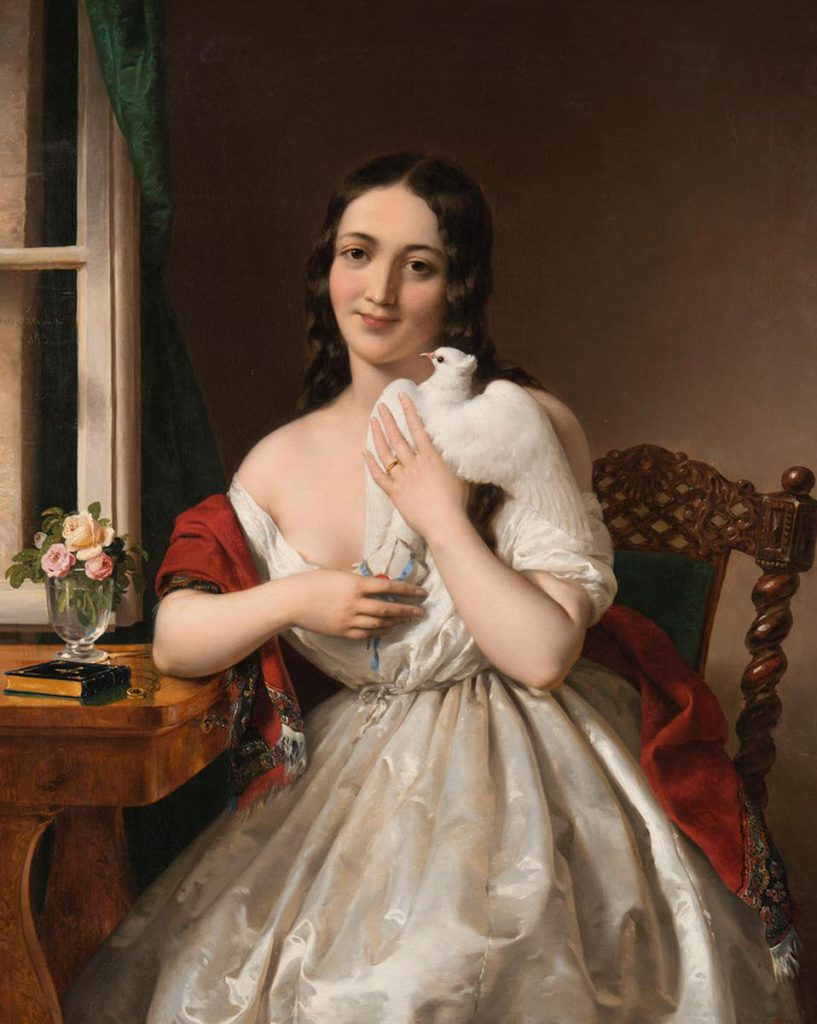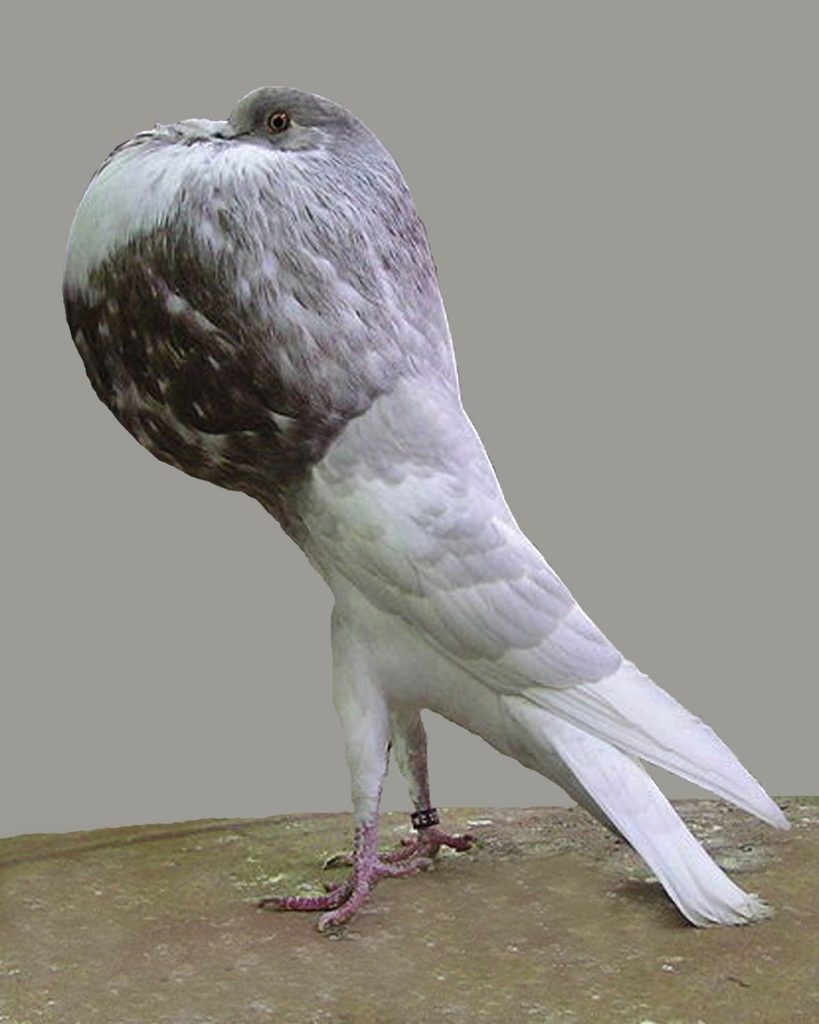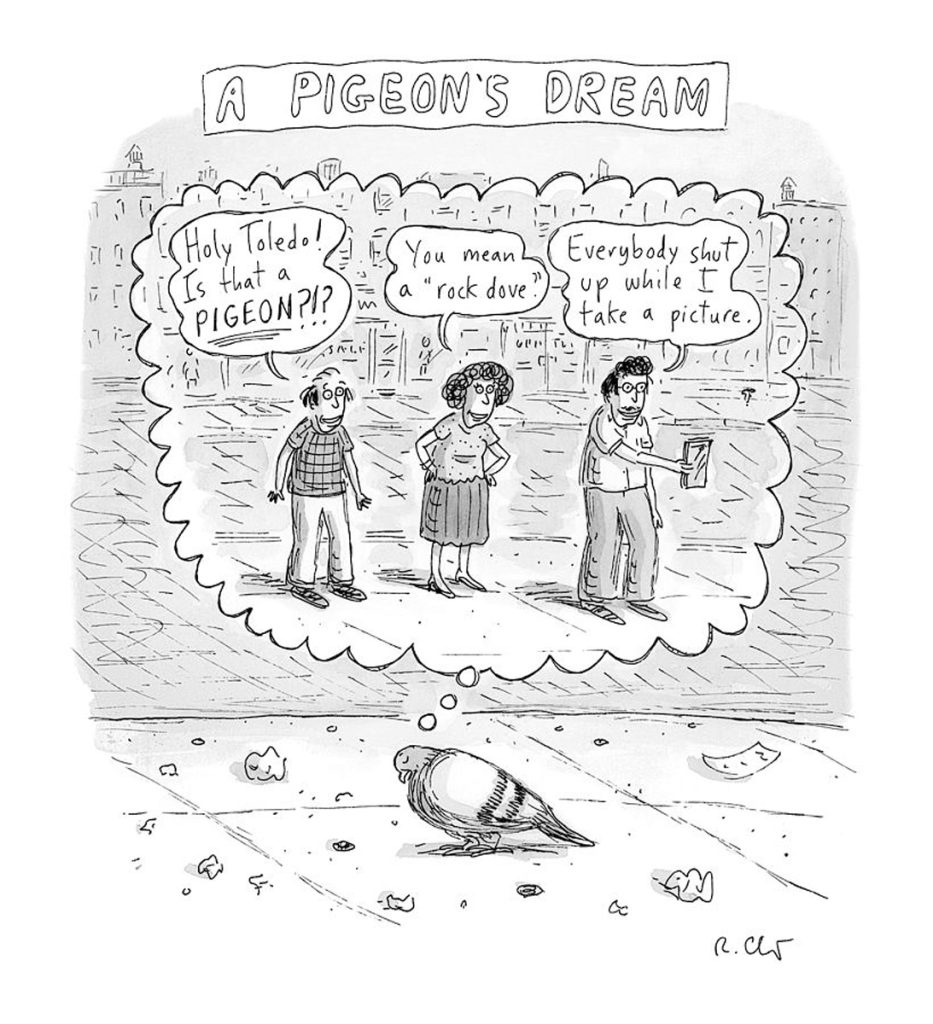







Pigeons get a bad rap, and not without good reason. They can spread disease through their droppings, they crowd birdfeeders to bully away smaller species, and they infest buildings to the degree that people have put up garish spikes and other deterrents to keep them at bay. But the modern attitude toward these “feathered rats” and “gutter birds” is a far cry from the reverence and esteem our ancestors held them in, when they were crucial sources of food, the earliest form of wireless communication, and decorated war heroes.
Emperor Charlemagne would be aghast at the shoddy treatment of the modern pigeon. During his reign, the privilege of pigeon keeping was reserved only for those most deserving and capable, the wealthy nobility. Pigeons lived not in boxes but in luxurious towers called dovecotes. These pigeon apartments allowed for easy the collection of eggs and harvesting of dung for fertilizer or gunpowder while providing cozy nesting quarters for their feathery tenants. Dovecotes were prominently used across Europe and the Middle East, and many of the structures are still standing today. These towers weren’t cages; the pigeons could come and go as they pleased and would seek shelter from predators and severe weather when they needed it.
Long before Charlemagne’s reign, pigeons (specifically the homing pigeon) were being used by humans as messengers. The earliest evidence of this purpose comes from ancient Egypt. NYU professor Colin Jerolmack, in an article for Atlas Obscura, cites “an Egyptian bas-relief from around 1350 BCE depicts a flock of pigeons being released from their cages to fly and then return” as evidence. While some scholars aren’t sold on this as concrete proof (perhaps the Egyptians just took some artistic liberty), there is prolific documentation of post-by-pigeon in the Roman empire and in ancient Greece.
The winners of the first Olympics in 776 BCE were announced via pigeon, Ghengis Khan created a pigeon postal service across his empire, stockbrokers in the 19th century depended on the winged messengers for evaluations of stock prices, and it was a pigeon who brought the news of Napoleon’s defeat at Waterloo. The use of pigeons during the Napoleonic wars begged the question: could these loyal, agile creatures be used in military service? Having no better option, Parisians under the 1870 Prussian Siege sent off a mail balloon carrying a pilot and three pigeons over enemy territory into a French commune. The pilot landed safely, attached a message stating so to each pigeon, and let them loose. Two of them returned unharmed to Paris. From this initial success, homing pigeons quickly became invaluable in warfare.
Despite the technological advances made by WWI, pigeons were still being used to carry messages over German territory, braving bullets and hawks as they flew through war-torn skies. Snipers were trained for the specific purpose of stopping these pigeons, yet the danger and mortality rate did not deter them. One such brave pigeon was Cher Ami, who was hit by bullets three times during his mission to fly a message from American POWs to their headquarters. The coordinates attached to the remains of his right leg allowed for the rescue of the POWs. Cher Ami died from his wounds the following year. For his service, France awarded Cher Ami their highest military medal, the Legion of Honour. To this day, his taxidermied body is on display at the Smithsonian.
In WWII, pigeons were again used to deliver messages between the allies, such as American pigeon G.I. Joe. After retaking an Italian village from the Germans ahead of schedule, British troops were unable to radio back and call off an imminent American air raid. One hundred lives were saved when G.I. Joe covered a 20-mile distance in 20 minutes, delivering the message as pilots were warming up their engines to take off. He received the Dickins Medal for his service, the animal equivalent of the medal of honor.
A memorial commemorating these and other heroic birds was unveiled in 1951 in England. The inscription reads “In memory of warrior birds who gave their lives on active service 1939–45 and for the use and pleasure of living birds. A bird of the air shall carry the voice and that which hath wings shall tell the matter.”
So why the fall from grace? Firstly, pigeons are no longer the avian delicacy of choice, having been usurped by chickens. European colonists brought them along for the journey to the Americas for a stable, familiar food source, having no way of knowing just how well their companions would adapt to a new land. As poultry production increased, as gunpowder replaced pigeon feces, and as technology advanced beyond the pony express and telegraph into the telephone, there was no longer any need for their services. Pigeons were written off as a nuisance. That is, until discoveries were made about their intelligence.
Pigeons are smart. Really smart. A 1995 study showed pigeons could discriminate between paintings done by Monet and by Picasso. The study was replicated in 2001, this time with Van Gogh and Chagall. The pigeons proved to have comparable discernibility to the human subjects. In 2010, we learned that pigeons could not only tell the difference between artists, they could appreciate the art they were looking at. The experiment displayed several sets of two children’s paintings, one “ugly” painting and one “good” painting, as determined by the human observers. After being trained to peck at aesthetically pleasing paintings, the pigeons were then shown ugly and beautiful paintings side by side. They proved to be able to choose the prettier of the two consistently, but this ability declined when the pictures were shown with blur and gray-scale, meaning pigeons use color and patterns for cues in their aesthetic judgments. In 2015 scientists went further, testing if pigeons could identify cancer clusters in radiology images. The findings showed that pigeons “can serve as promising surrogate observers of medical images” and “suggest that pigeons are well-suited to help us better understand human medical image perception.” Being an invasive species, pigeons are under-studied, yet the evidence we have shows we have much to learn about them.
Taxonomy-wise, there is no difference between invasive pigeons (the “Rock Dove”) and native doves like the Mourning Dove. They both belong to the Columbidae family, the same family that hosted the oft-maligned Dodo Bird. These birds are characterized by squat, stout bodies, a diet of seeds and grasses, and the unique ability to secrete “crop milk” from a throat pouch. Also of import is the fact that fledgling doves are called (and this is their scientific name) “squeakers.” Columbidae is made up of 344 different species of dove, from the humble Rock Dove, the melancholy Mourning Dove, the symbolic White Dove, and “fancy pigeons” like the American Fantail, Chinese Owl, and Norwich Cooper, which is one of the only birds that looks like it should be wearing a monocle and top hat.
While Mourning Doves are synonymous with monogamy and romance (the birds mate for life) and White Doves are universally acknowledged as a symbol of peace, no such reservation is made in the popular imagination for Rock Doves. But I invite you, dear reader, to view these birds not as loathsome pests but as valiant warriors, as discerning art critics, as future medical assistants. Let their presence be a reminder of peace in spite of their drab coloring—from the ashes of war they emerge stained gray, a cooing testament against the atrocities of war-mongering here and abroad. “That which hath wings shall tell the matter.”
Author
-

Bryce Flanagan moved from Sacramento, CA to Taos County in 2016, and has lived in Questa for two years. He's passionate about the unique and beautiful wildlife of our state and is a regular contributor to the Questa Del Rio News.
View all posts


